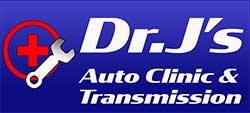Air Conditioning Maintenance, Service & Repair
Air Conditioning Maintenance
Don’t lose your cool over an air conditioning system that’s not working properly!
Bring in your car, truck or SUV for air conditioning inspection, diagnosis and service. Did you know that your air conditioning belt drives many other components in your vehicle? This means that a broken belt can have a much worse impact than simply an uncomfortable trip. The expert mechanics will take care of everything- whether it’s simply a recharge of refrigerant or maybe installing a new compressor- you’ll have peace of mind knowing that your vehicle will keep you cool and safe.
Automotive Air Conditioning System Service, Diagnosis & Repair for Cars, Minivans & Light Duty Trucks
DID YOU KNOW?
The Federal Environmental Protection Agency regulates the type of refrigerant you can use in your air conditioner. Our service technicians are current on EPA rules for properly removing and disposing of used refrigerant, protecting the environment while keeping you cool. We install quality NAPA replacement parts. Let us help keep you safely and economically on the road!
If the breeze from those open windows just isn’t cutting it, come by our shop in Albuquerque, New Mexico to get an expert opinion on what we can do to fix your automotive A/C or heating problems. We offer affordable prices and guaranteed workmanship. Contact us at (505) 341-4747, so we can help you drive in comfort.
Brakes Your Most Important Safety Feature
-
Your air conditioner blows only hot air from the vents
-
The air conditioner blows cold only sporadically
-
There are noises when you run your air conditioner
Every Air Conditioning Service begins with our state-of-the-art air conditioning system diagnostic test. This diagnosis includes:
-
Inspection of the air conditioning compressor drive belt for cracks or damage
-
Inspection of all air conditioning-related components for leaks or damage
-
A check for proper operation of the air conditioning compressor and other components prior to service
-
Testing lines, hoses, seals and other system components for leaks
Depending on the results of the diagnosis, the system is then serviced only as required to ensure proper operation, which might include:
-
Evacuating refrigerant from the system
-
Recharging the system using the appropriate refrigerant to the exact system capacity according to the vehicle manufacturer’s specifications
-
Performing any necessary service on compressor, evaporator, condenser and electrical controls
-
Rechecking the system to ensure proper operation.
Hard at work
While your vehicle is at Dr. J’s Auto Clinic, our certified mechanics will also perform a Multi-Point Inspection to safeguard that all of the major systems in your car, truck or SUV are in good working order.
Air Conditioning Service/Repair
Today’s vehicle a/c systems can lose 5% of their refrigerant per year causing the system to become inefficient. Another thing to remember is the a/c system is used all year long, every time the defroster is used the a/c system is activated to assist in removing the moisture from inside the vehicle which can defog windows much faster than non a/c equipped vehicles. It is recommended that modern a/c systems be tested annually to assure peak performance.
Schedule an appointment with one of our factory trained professionals and let us make sure you’re a/c system is running efficiently. We have the latest equipment available to diagnose the computerized components, as well as to service all the different systems including the newer systems on hybrid and electric vehicles. Below is a brief explanation of the major components that make these a/c systems work so well
Compressor:
The compressor is a belt-driven device that compresses refrigerant gas and transfers it into the condenser. The compressor is the core of your vehicle’s air conditioning system.
Condenser:
The condenser’s primary function is to cool the refrigerator. The condenser dissipates heat released by compressed gases and condenses them into high pressure liquids.
Receiver (Drier):
The receiver is a metal container that serves as a storage receptacle for the refrigerant; also known as a drier because it absorbs moisture from the refrigerant and filters out harmful debris and acids. You should change your drier every 3-4 years to ensure quality filtration and prevent any chemical damage.
Orifice Tube/Expansion Valve:
The orifice tube (also known as the expansion valve) is a controlling mechanism that regulates refrigerant flow throughout the system. It also converts high pressure liquid refrigerant (from the condenser) into low pressure liquid, so that it can enter the evaporator.
Evaporator:
The evaporator removes heat from the inside of your vehicle. The evaporator allows the refrigerant to absorb heat, causing it to boil and change into a vapor. When this occurs, the vapor leaves the evaporator through the compressor, cooling your car and reducing humidity. The evaporator houses the most refrigerant in the heat transfer process and harmful acids can corrode it. This corrosion typically damages the evaporator beyond repair.
Batteries
